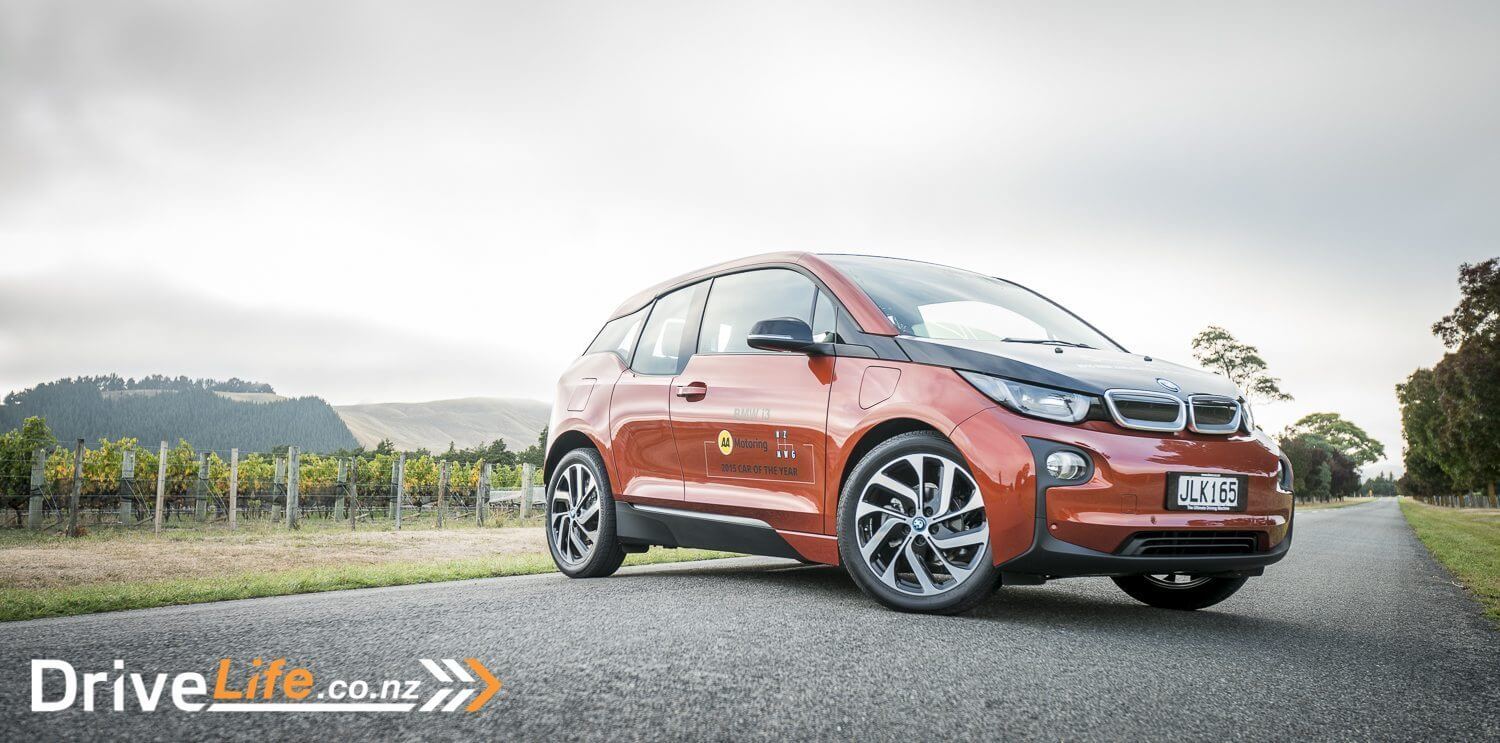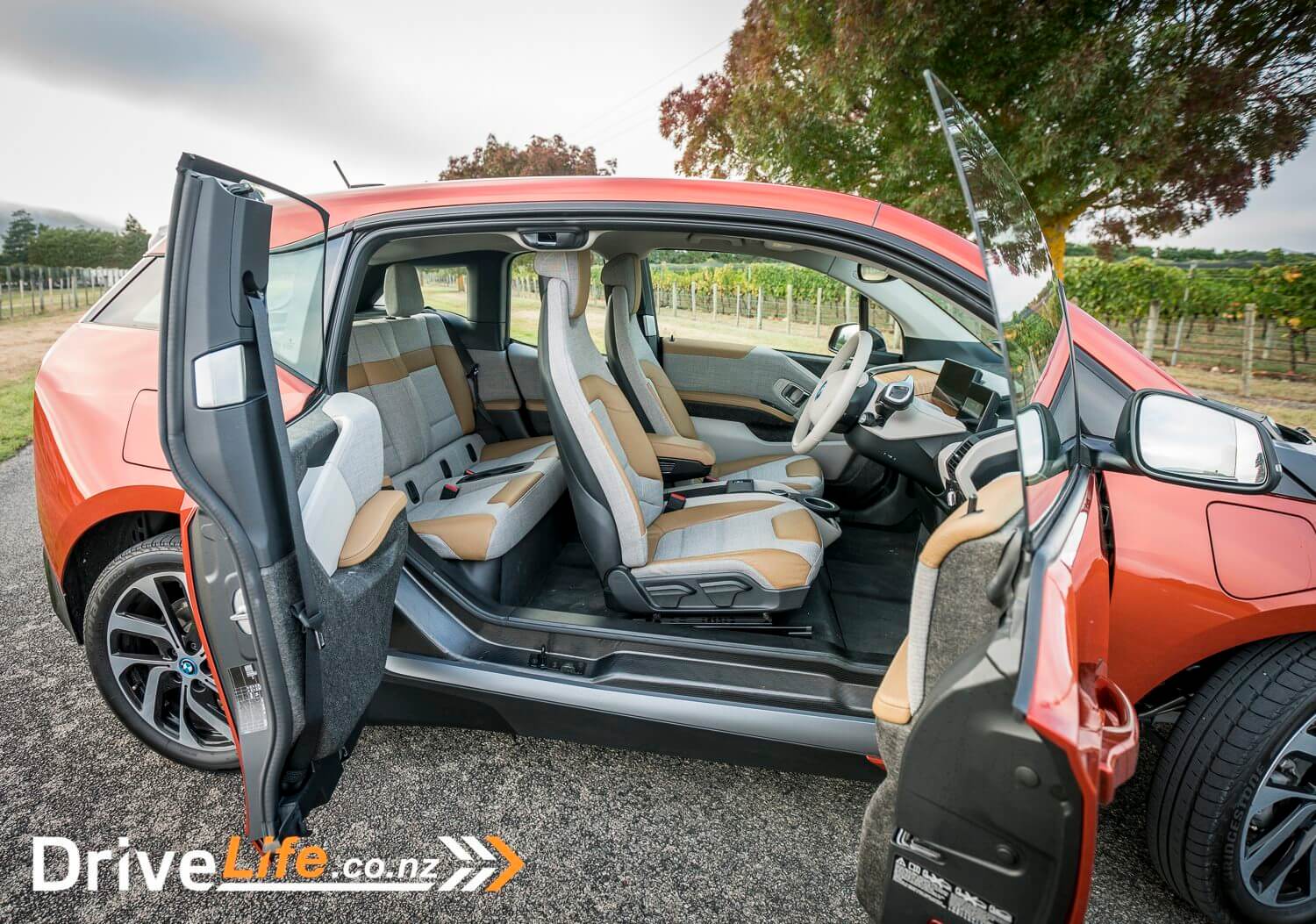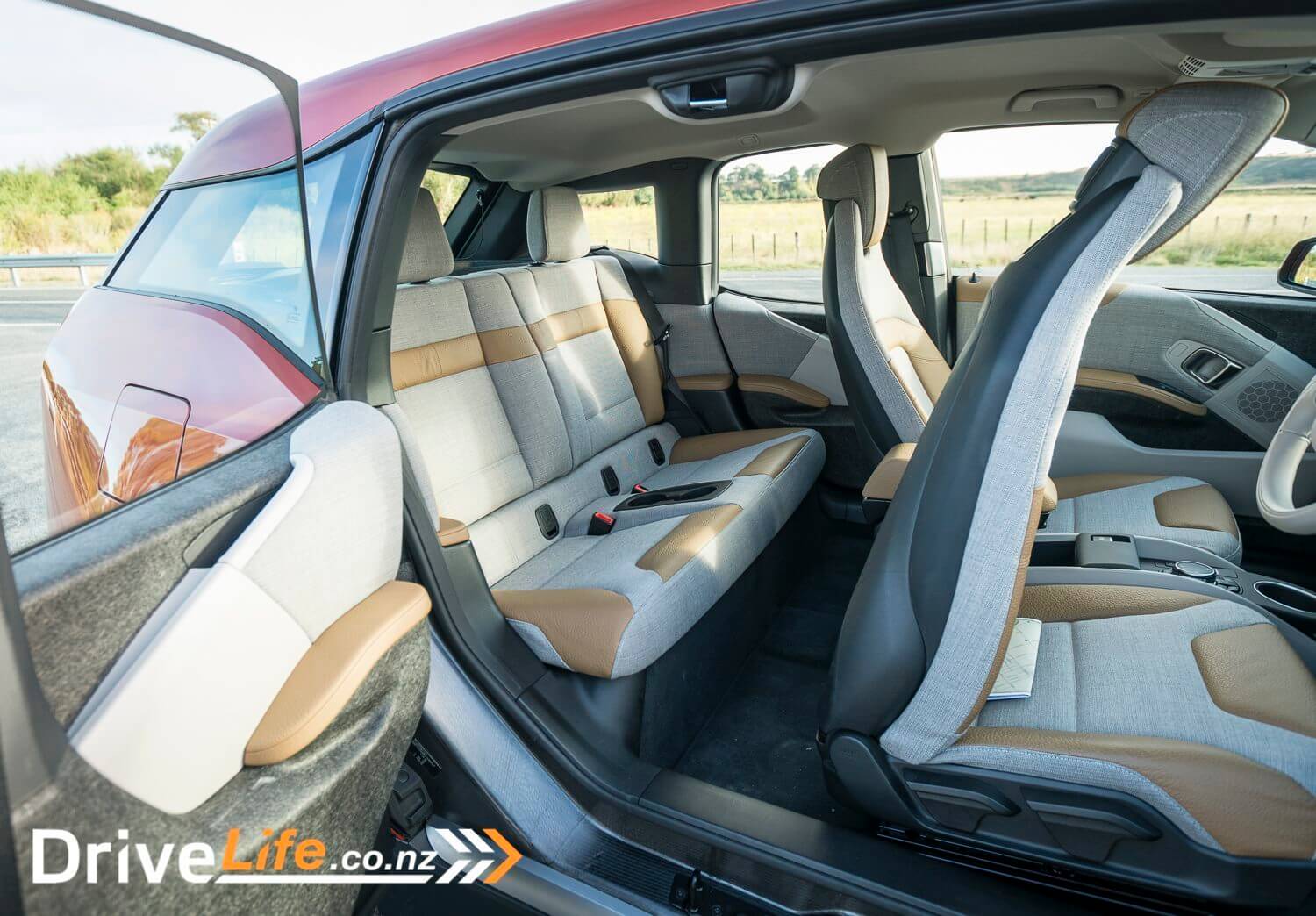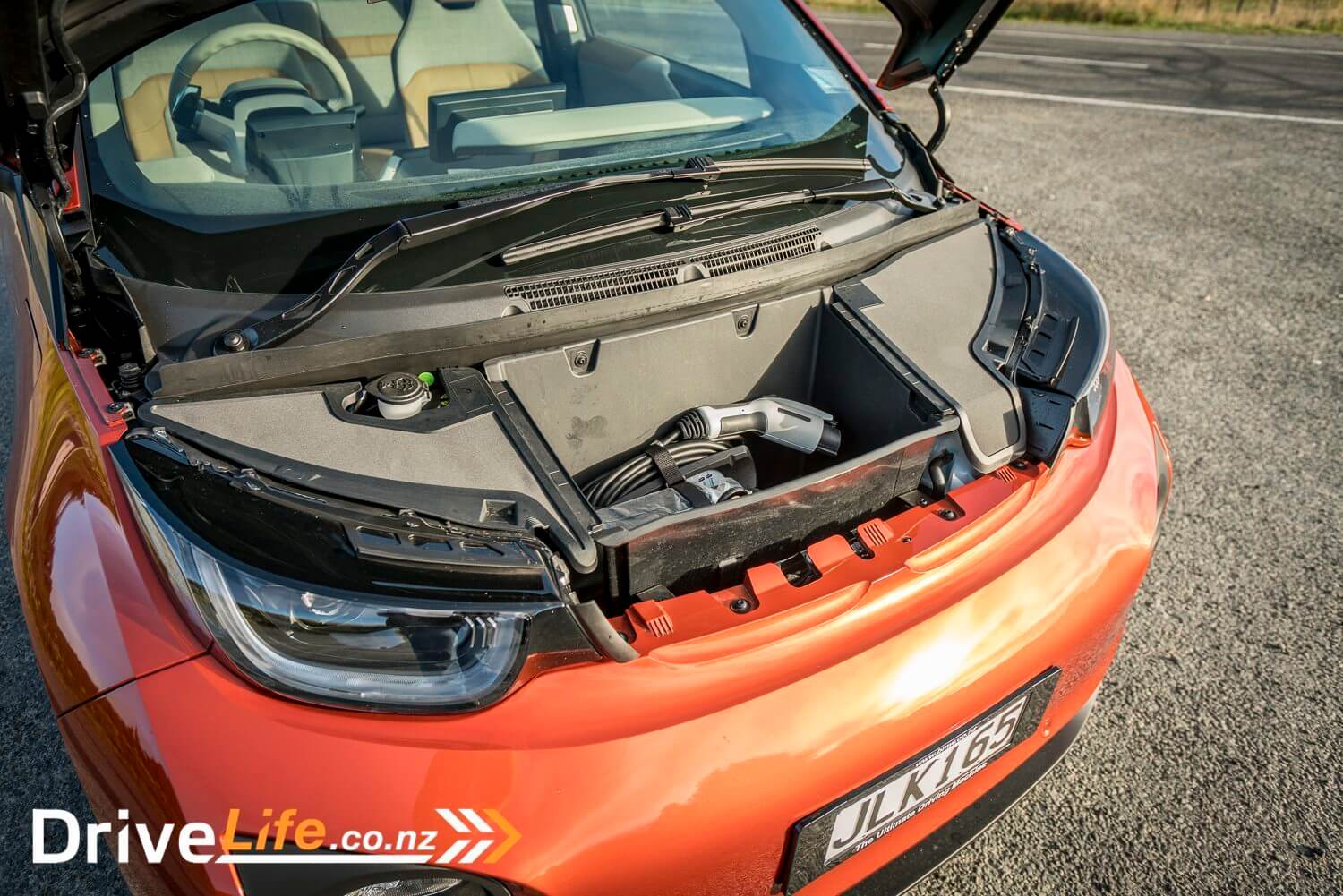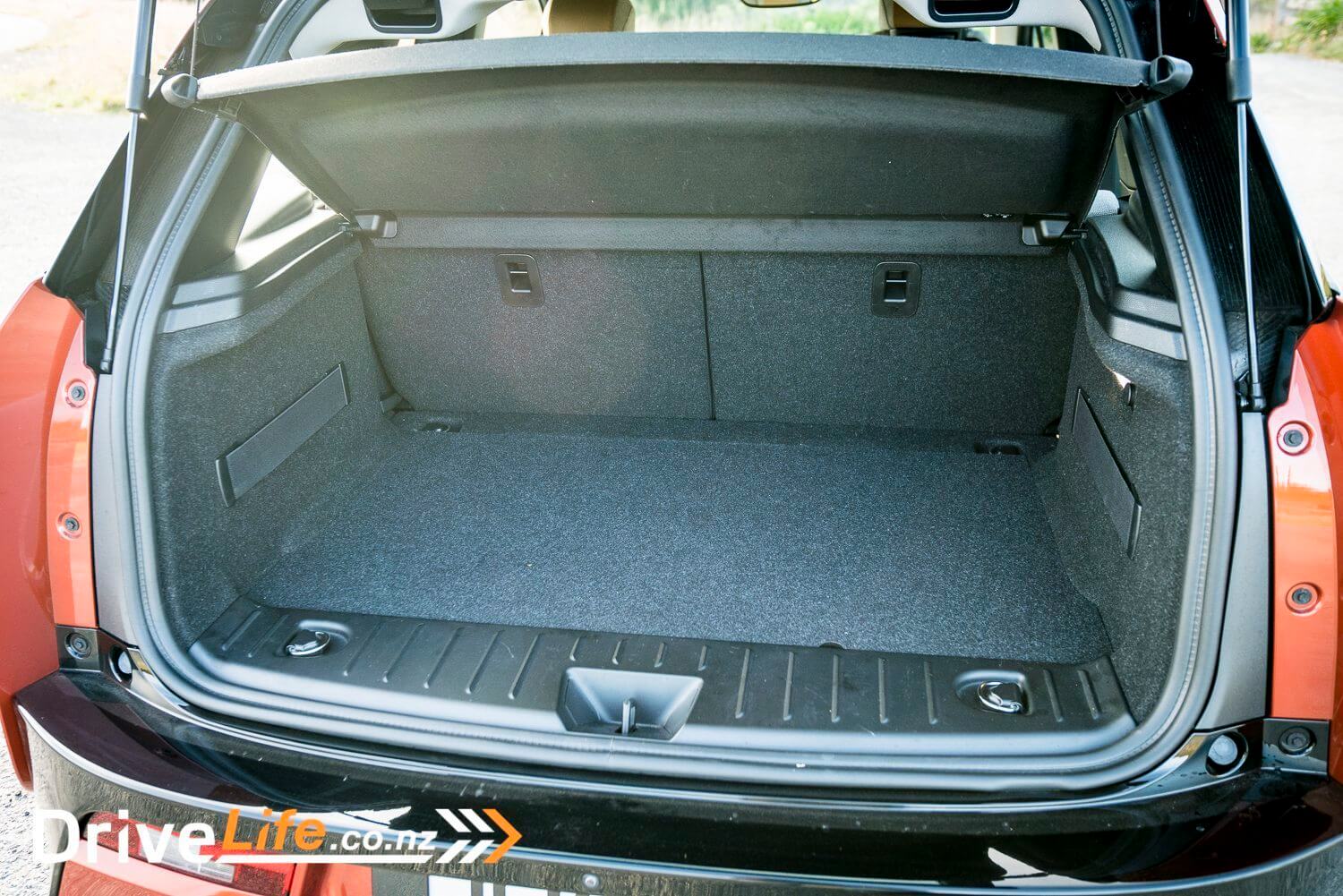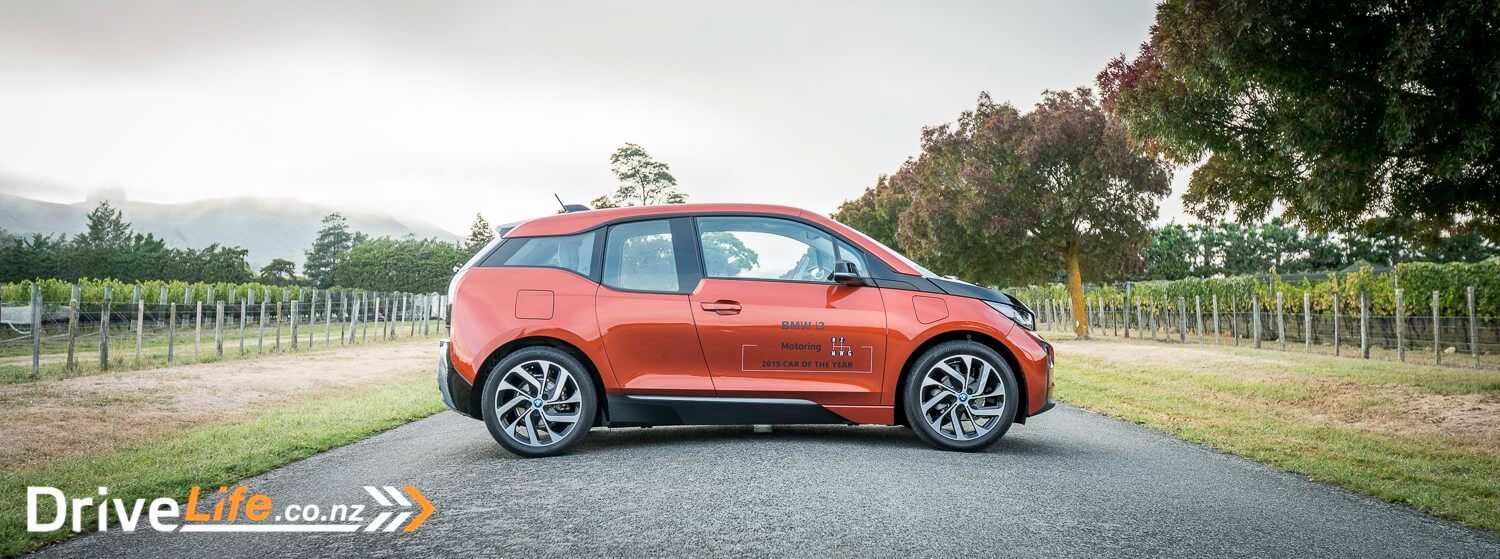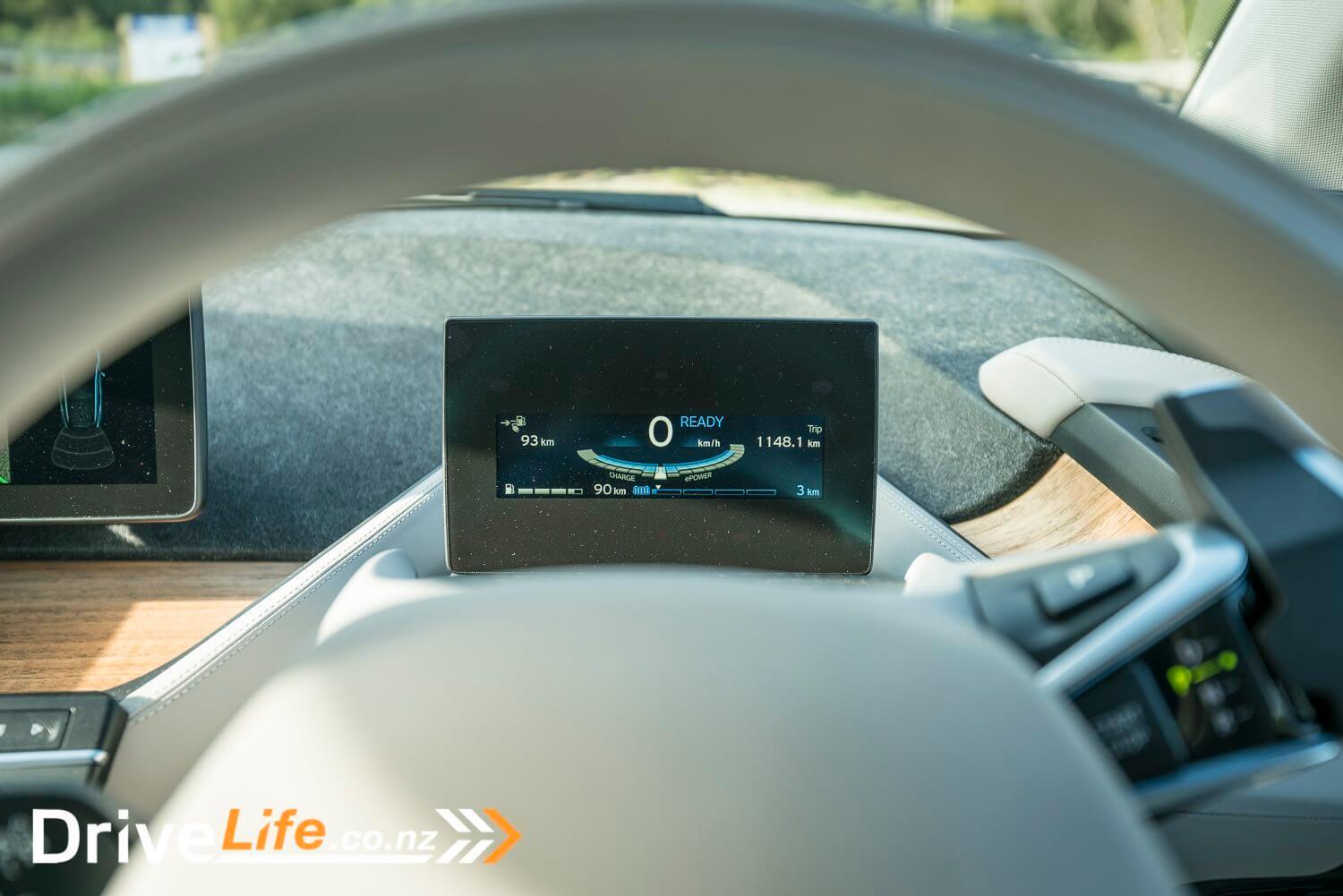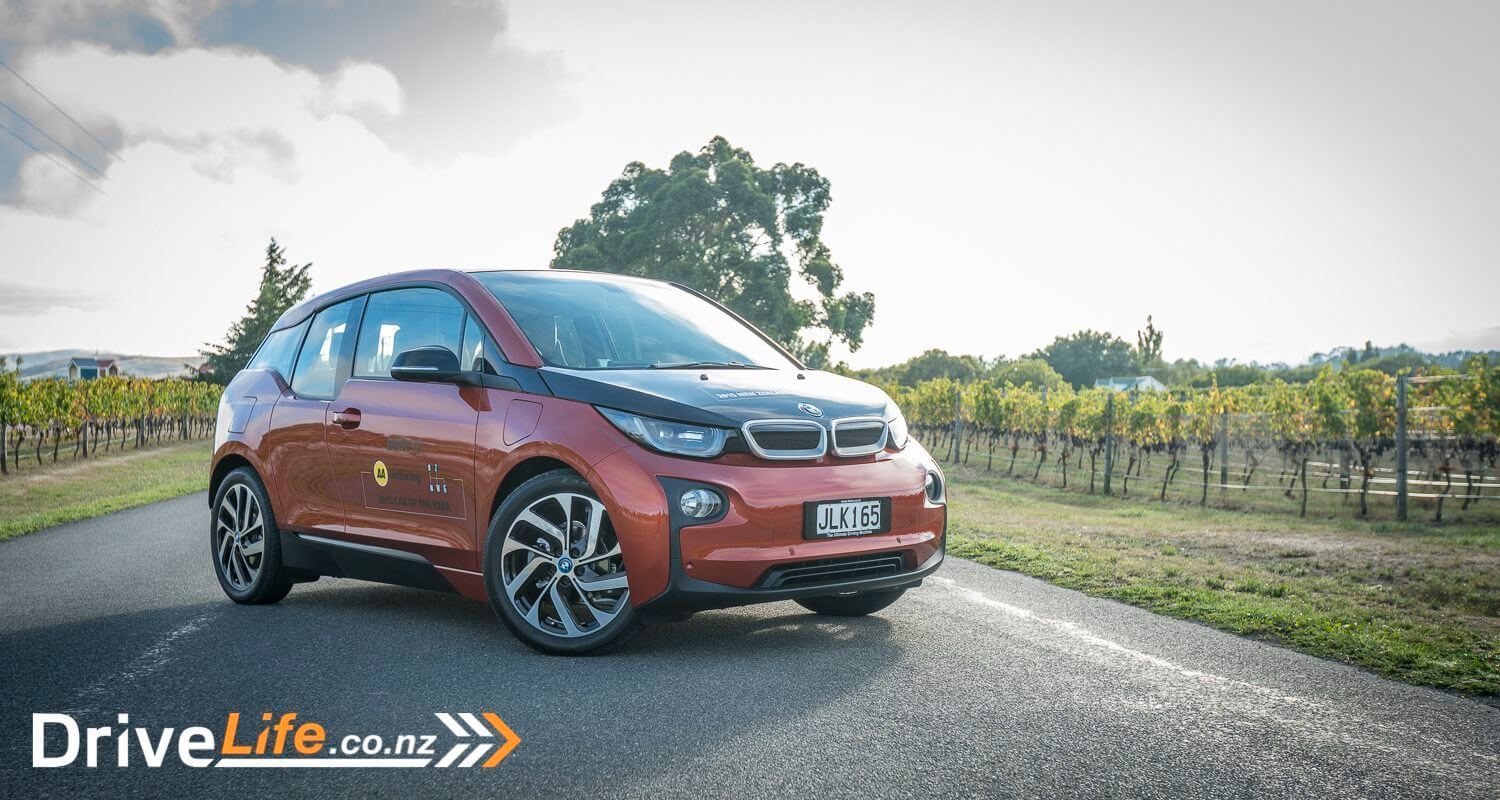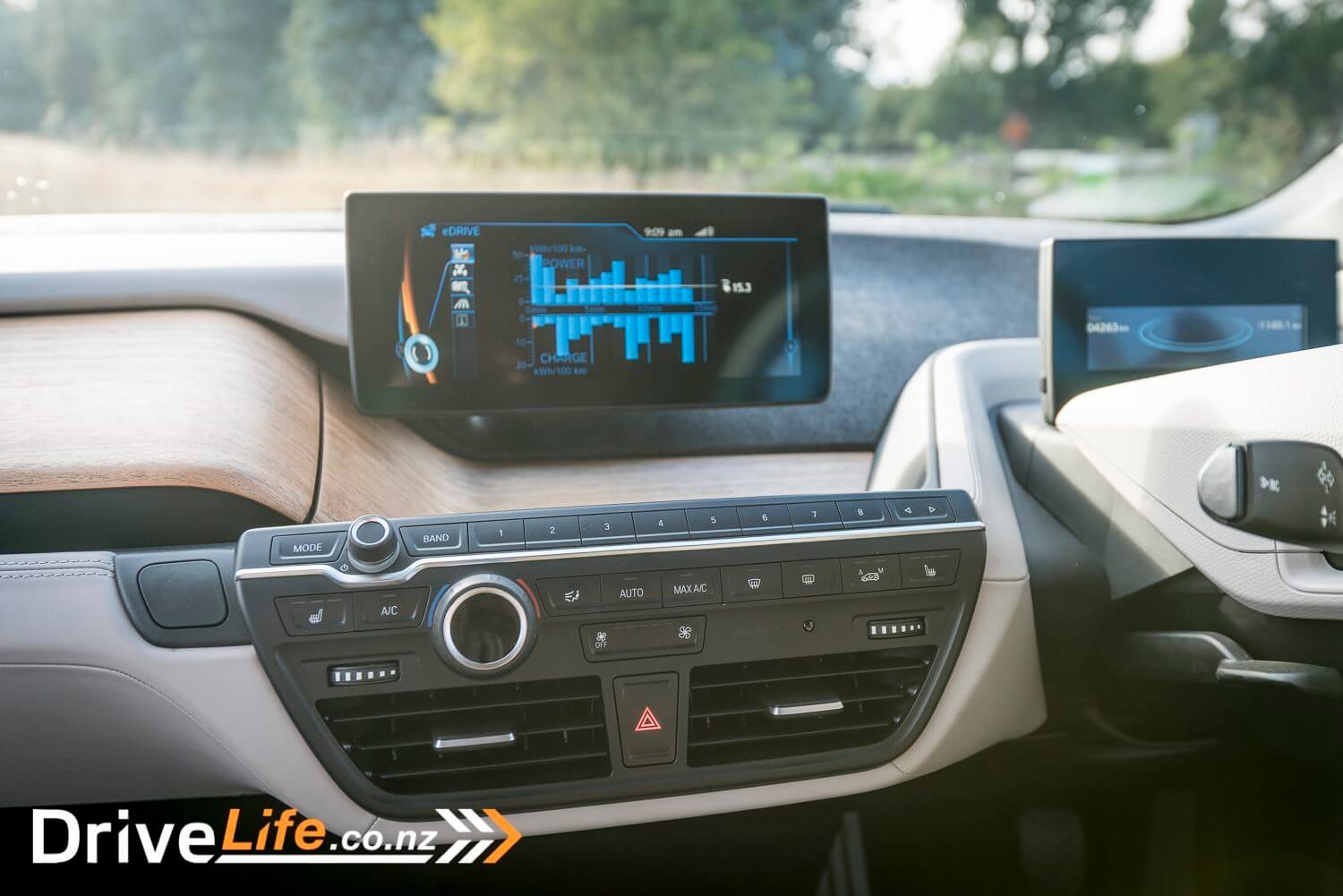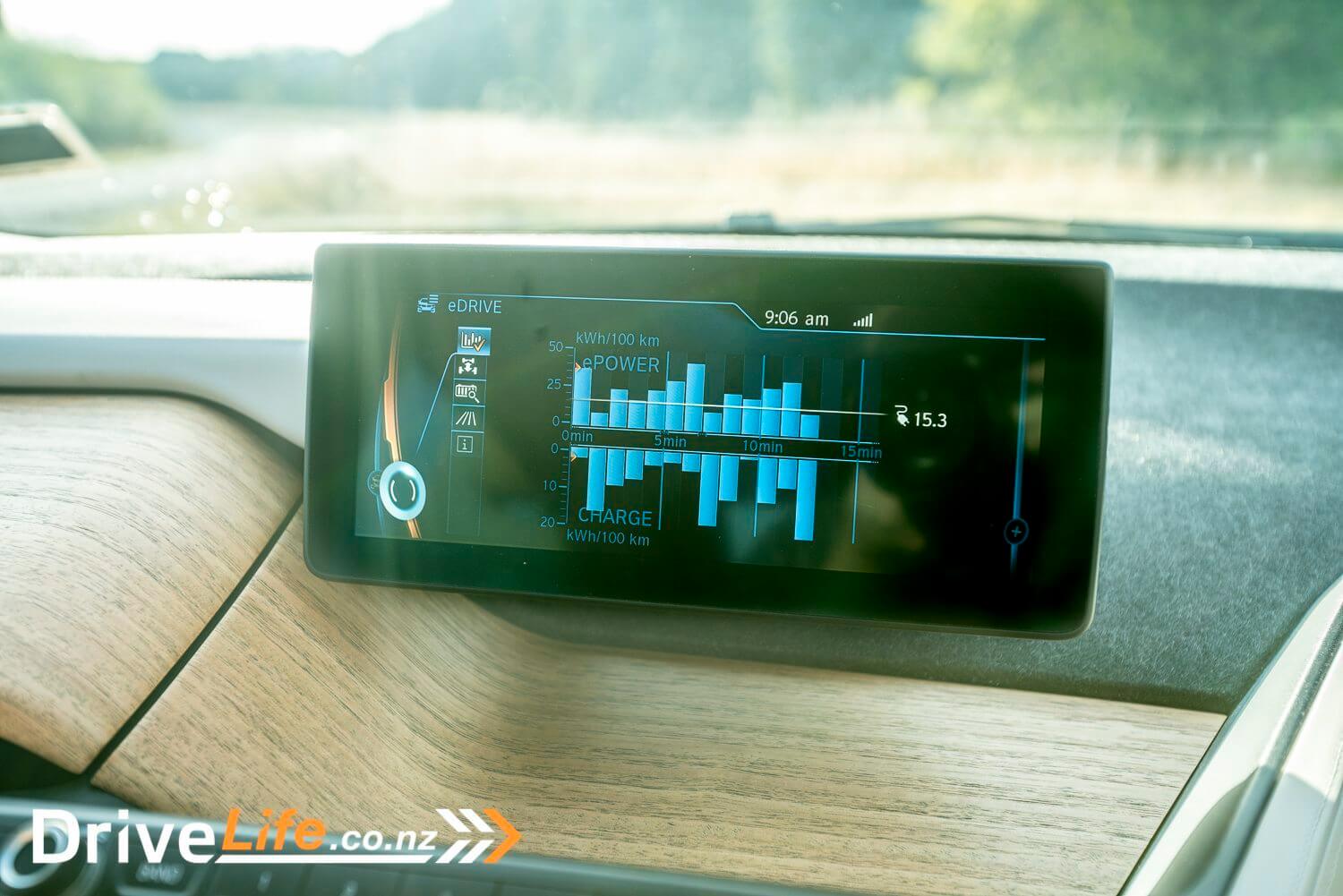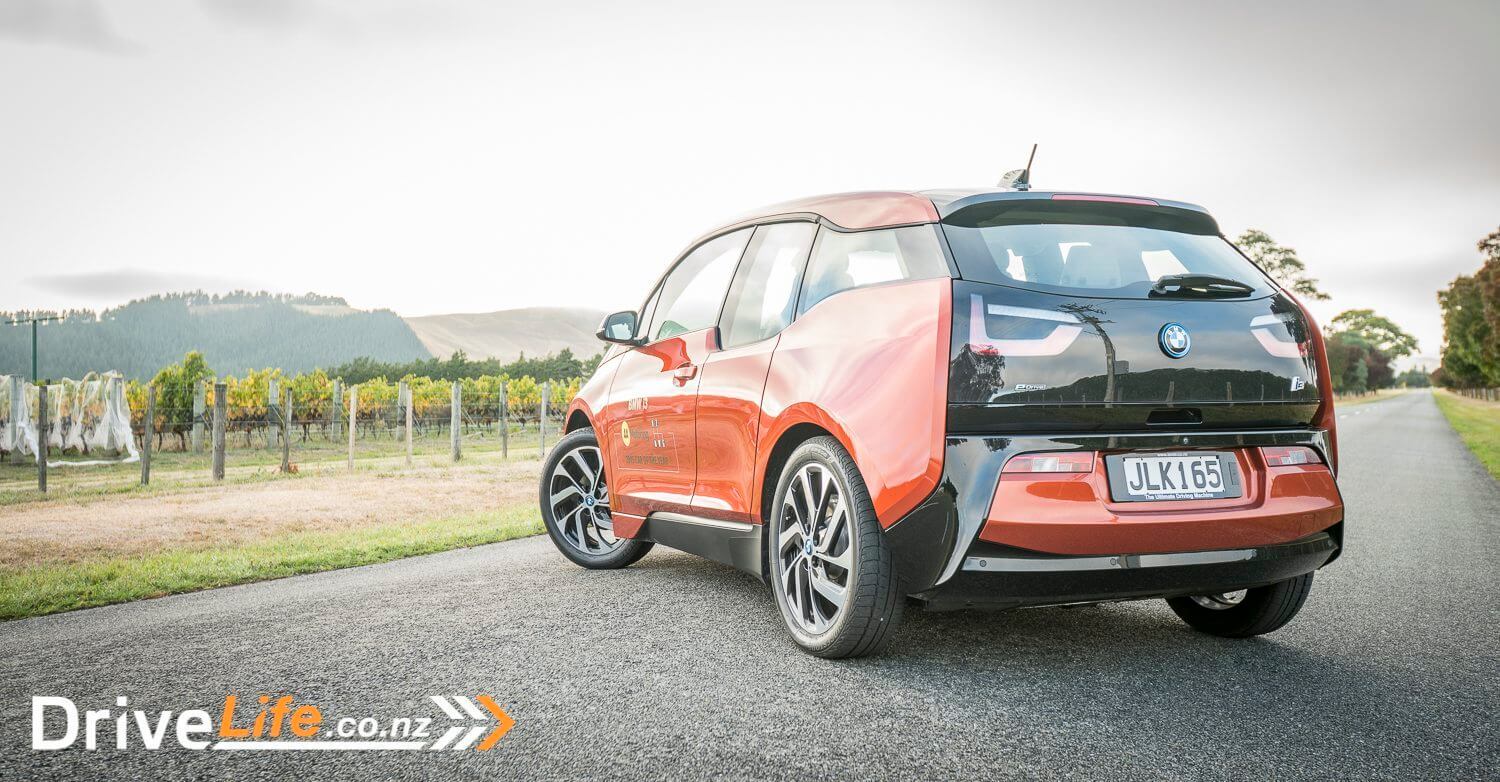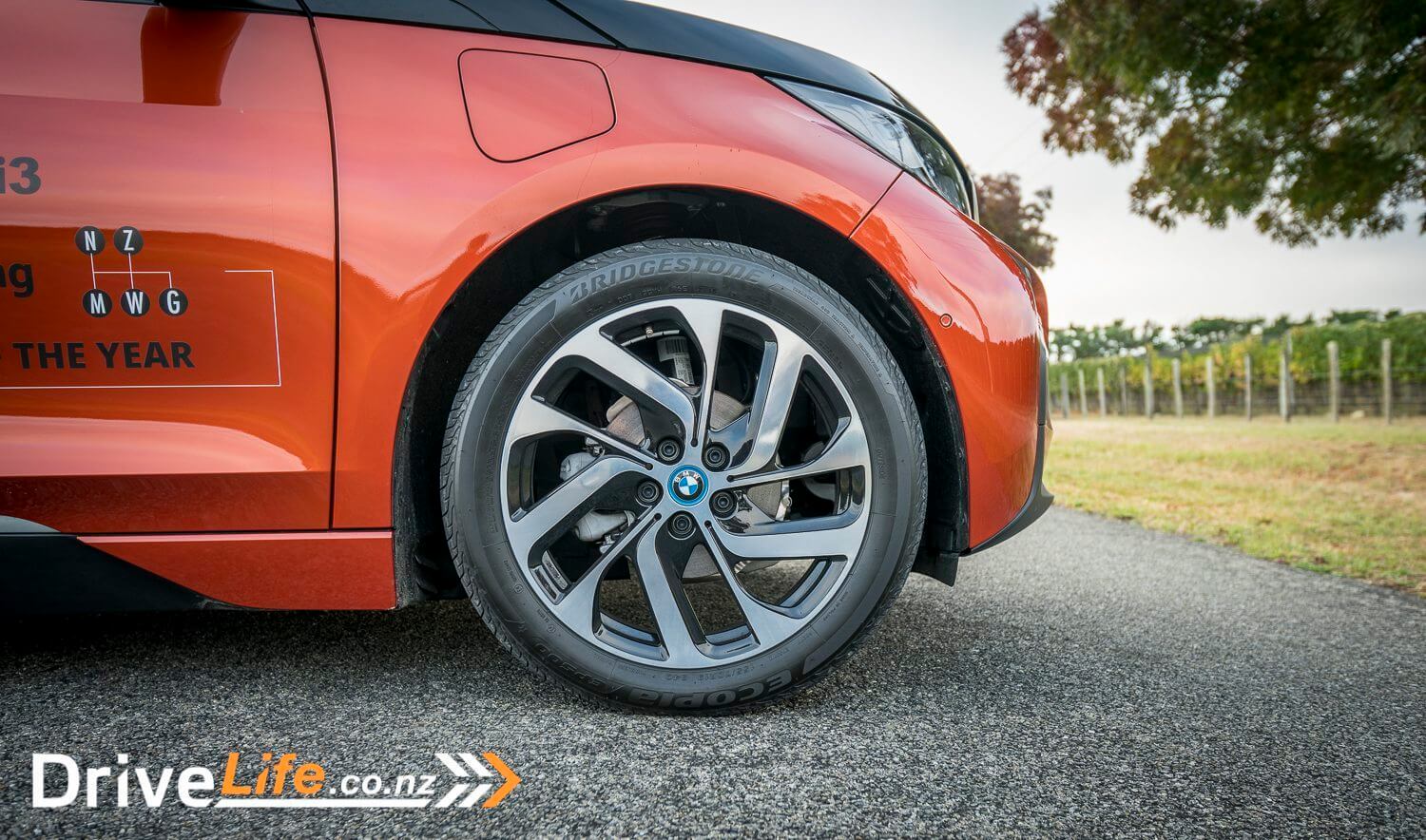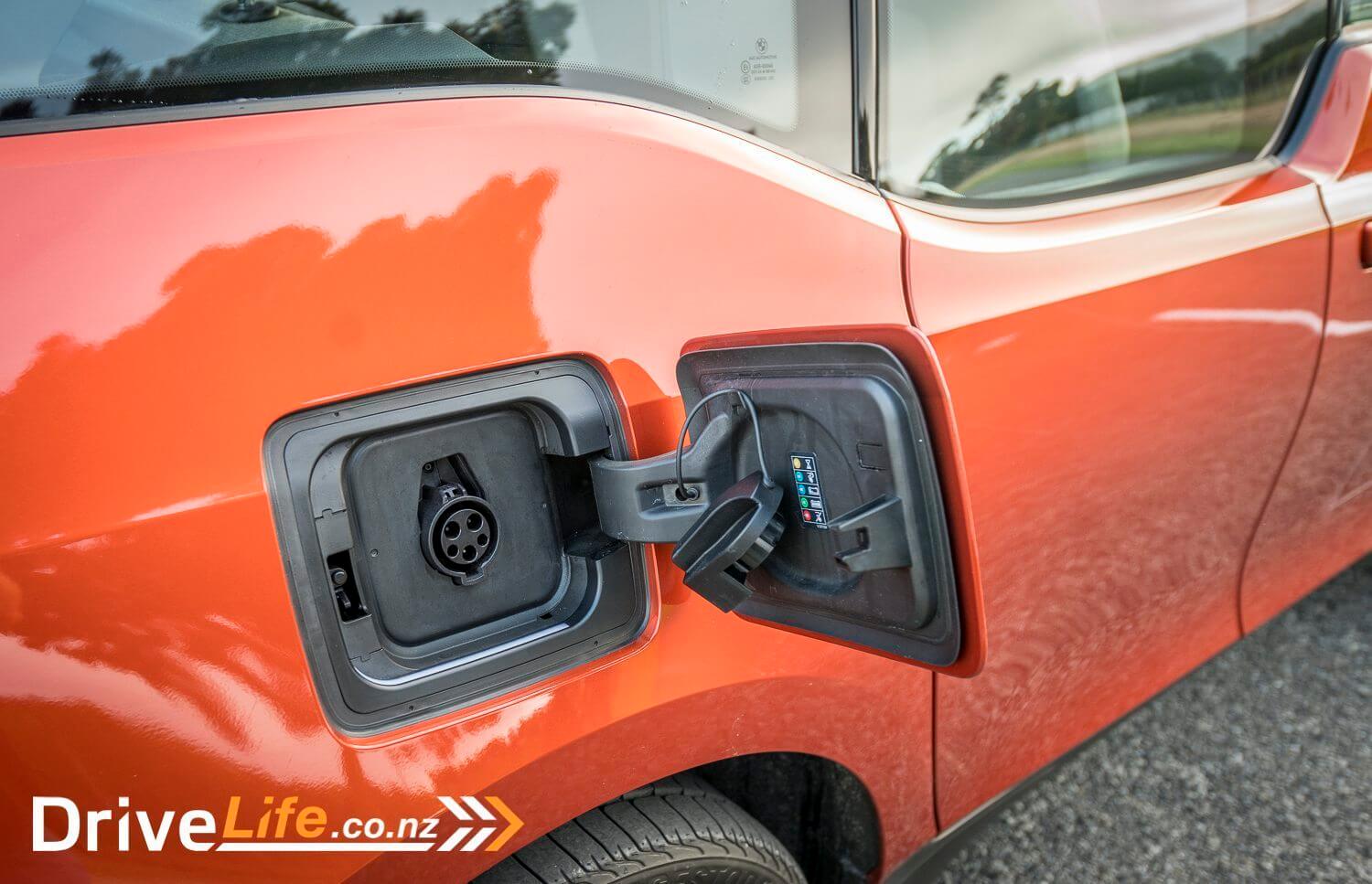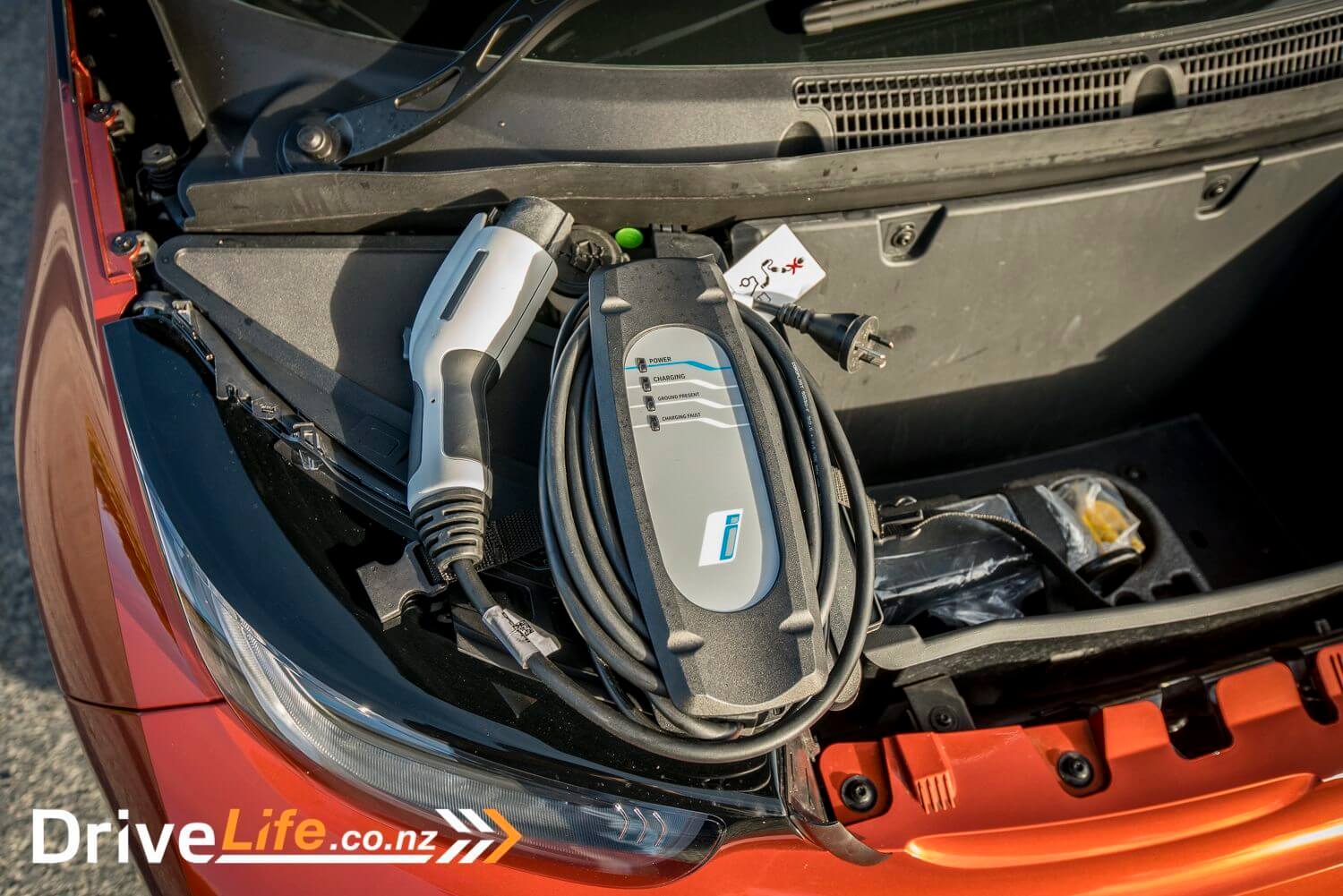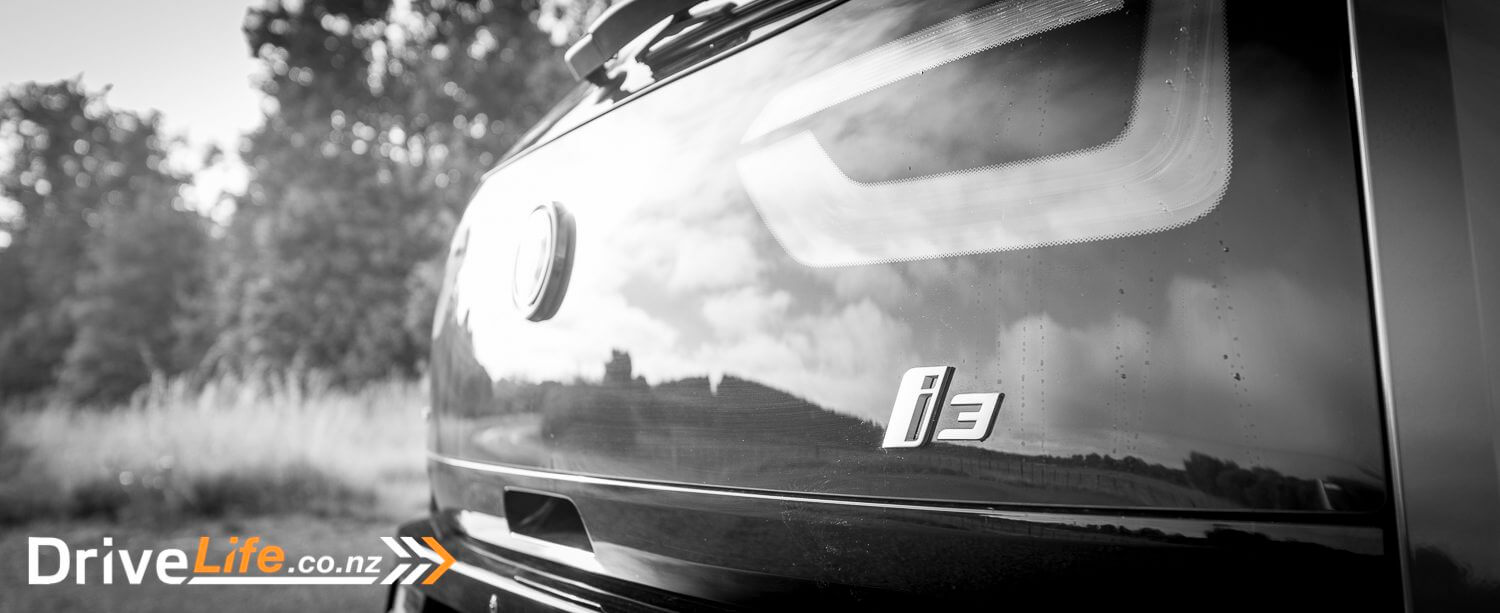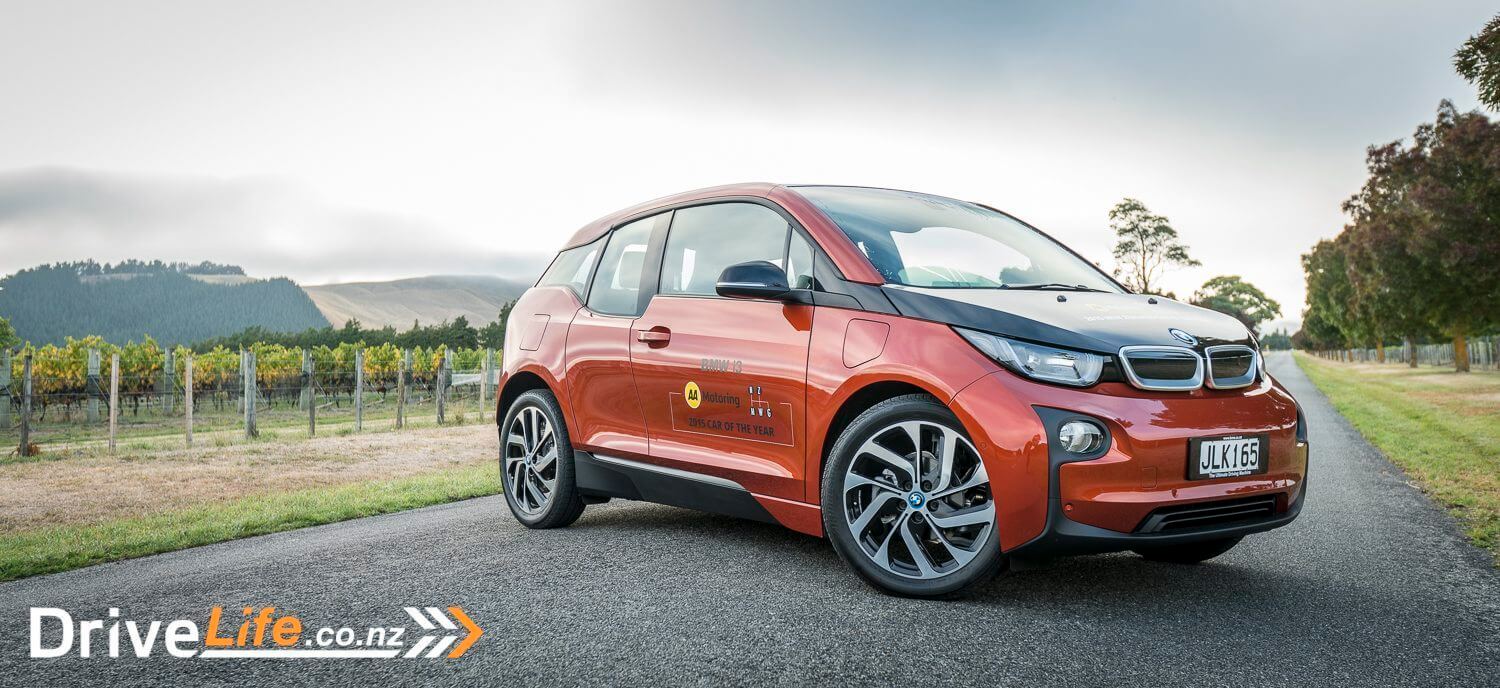First Impressions
My first impressions were good, as I had briefly driven the i3 and i8 while visiting BMW’s head office in Auckland. Needless to say, I was excited to drive the i8, but keen to experience the i3 and see what all the fuss was about. At day’s end, I was quite surprised to find that the i3 impressed me more than the i8. This may seem like madness, but the i8 was everything BMW promised, it was a hybrid super coupe. It looked the part and was awesome to drive, but this is what I expected it to be. The i3 on the other hand, was interesting to look at, but not like something that you really yearn to drive. But after a brief half hour drive, I was surprised indeed. At the time, as we only tested it for such a short period I decided it was not worth doing a write up, until we had it for an extended review. Before we go too far, I want to explain that I am not really the target market for these cars, not yet anyway. I drive a gas guzzling Audi RS6, and and have plenty of justifiable reasons to keep it, which I will get back to later.
Inside
Everything about this car is odd or different, and that’s not always a bad thing. And the first odd thing you are greeted with is the interlocking front and rear suicide doors that open wide up to allow easy access in and out of the vehicle. The standard B pillar is now part of the rear door, and it allows most people easy access into the back seats. Yes I did say most, there was a couple of occasions where people entering or exiting the vehicle hit their heads on the large door lock for the rear door, as it seem to stick out right into where your head would travel while getting in or out. Let’s just say that did not win the car any favours with these people.
This BMW is not a small car, but it’s not a big car either. Inside the i3, you would be surprised at how much space there is. Dr Who’s Tardis comes to mind. Since you don’t have an engine, you don’t need a firewall, between you and it. So you can push this space forward creating an open driving position. The dash has also helped this design, by minimising the normal central instrument console, and steering wheel gauge display. At first you think it’s strange, but you’re not missing anything you have in a normal vehicle. With the large window and materials selected in our test car, it allowed a lot of light to bounce around the cabin’s interior, creating a large open feeling.
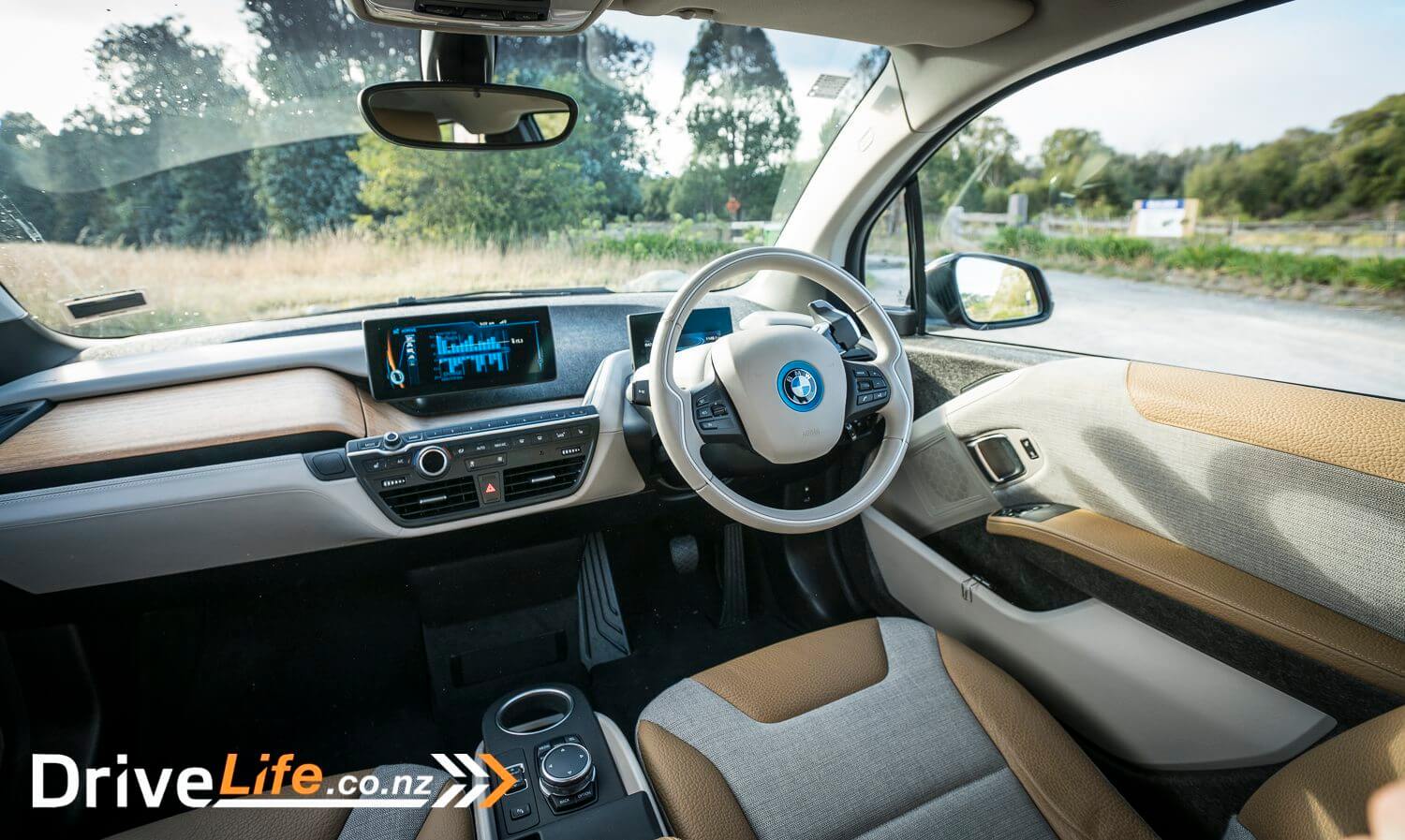
The materials used inside the cabin where not your normal range of plastics and leathers. But in fact a lot of it has been made from recycled or more eco-friendly sustainable materials. There is Eucalyptus on the dash, fake leather on the seats, and visible recycled plastic on the doors. It would not be my choice of colour combination, but it did work. It left you with a very up market, trendy feel. And like any other BMW, it’s well built, nothing feels cheap, and it’s quite a nice / quiet place to be. The only negative side to all these fancy materials, is the recycled plastic / fibre used for the door cards, and main dash (behind the displays). It was fine, until sun directly hit it, then it became quite shiny, which caused a lot of reflection on to the inside of the front windscreen. I found this quite annoying due to the glare on several occasions.
The boot is pretty decent too, they have cleverly provided a space under the bonnet for the plug in charger, so this does not take up any room floating around the boot. It’s a reasonably generous 260 litres, and grows to 1,100 litres when the rear seats are down. The week I had the i3 we had planned a trip from Wellington up and over to Martinbrough for the Easter long weekend. We were easily able to load up all we needed for the weekend, with the back seats down and still have room to see out the back via the rear view mirror.
The Drive
This part of the test was probably what I looked forward to the most. What was it, from an enthusiast’s point of view, like to drive. I know most of the customers who buy this car, won’t for a second care how it handles. But to me this is a BMW, regardless of what tech is in it, and even on the licence plate surround, it stated, “ The Ultimate Driving Machine”, and that needs to be tested. The thing you notice when you drive the i3 for the first time, is that it’s quiet, oh so quiet. And the second thing you notice, almost right after the first is when you lift of the accelerator pedal, the regenerative brakes kick in. And boy do they kick, BMW describe it more like one pedal driving. And I found myself doing just that, quite quickly. Using the accelerator to move off and then gauging the distance to the lights or cars stopped ahead lifting off and allowing the regenerative brake slow and stop the car without ever touching the brake pedal. It was weird at first but easy to get used to.
The i3 feels like a tall car, however it also feels like you have 90% of the car’s weight sitting under you. This means the centre of gravity is low, which will help handling, and it did. You could drive this car like an eco warrior, or a have a bit of fun with it. All NZ i3’s will have the range extender, making the 0-100km time stated from BMW at around 7 seconds, but its 0-60km is around 3.5 seconds, meaning the i3 is no slouch, if you want to get it off the line fast, you can, and it generally gets up and going a lot quicker then the standard array of cars around it. It does this smoothly and quietly, with a semi sci-fi sounding whirring coming from the 125 kw (168 hp) electric motors as they propel you along. I found myself quite enjoying zipping around town in this car, as it’s nippy and easy to position, making it quite fun to drive.
The more I drove it around town, I start to compare the driving style I was adapting, to that I used to use for Scalextric racing. You know, those small cars that have a slot in the track, and which around on electric motors. You always found the hard way that you could never nail it all the time. As your car would spin off on the bends. So you would push the trigger down on the straights and lift going into the corners. This was exactly the same thing I found myself doing driving the i3, as you rarely need to use the brake pedal. So for me it, became a bit of a game, much like driving a normal car, you like to get your speed into a corner and gear selection just right, the i3 was about gauging your speed/distance to cover for the regenerative brakes to do their job. Now it may sound like I am hooning around the city at 150km/h, but I was having great fun driving this car, all within the city speed limits.
As we do with all our cars, we test them in the city and out on the open road; motorway driving was a different kettle of fish for the i3. You may not notice how often you lift of your accelerator pedal when you’re on the motorway and coast, but it’s more than you imagine, which I found out quickly. Once you lift in the i3, the anchors are dropping, and the regenerative brakes kick in immediately. So you need to keep the pedal on all the time, thankfully there was BMW’s standard cruise control system, which helped on that longer trip over to Martinborough. But apart from that and being quiet, the i3 is quite normal to drive on the open road. The second part of my open road test was the road up and over the Rimutaka Hill. We left quite early on the day in questions, as I had hoped for a clear run up the hill, and I got it.
There were two things I wanted to test the i3 for on this road, one how it handles and two what sort of power drain and regain are we going to see from a big hill. This is where my years of Scalextric racing flowed back. For such a tall car, it handled amazingly well, and its light steering it was easy to position on the road. Having only 125Kw, and being 1422kg, it’s not going to be doing any eye watering speeds, but combined with the up hill climb this car seemed to have somewhat of an ideal setup for a bit of weekend spirited driving. Foot down, on the straights, would propel the i3 up to around 60 or 70km, then off on the power to let the brakes kick in, as you carved around the corners, then back on the power and you’re instantly away. This instant power also meant then overtaking any vehicles in the passing lanes was a breeze, we did come across one of two vehicles, and once safe to do so, I passed with little effort thanks to the one single gear, and not requiring to drop down a gear to access for power. I have driven many faster cars, but have to say not many that was as simple and enjoyable as this. Yes it lacked many things I would like to have heard, engine noises, gear changes pops and gurgles. But for what it is, I really enjoyed driving it.
And now for the numbers. At the bottom of the hill we had 77km range, and by the peak, after a bit of spirited driving, we had 50km range, a drop of 27km range in a distance of a steep 4.3km road. On the way down I had hoped I was going to be able to let the i3 coast all the way down, but I quickly found that the regenerative brakes were too strong, and even rolling down the other side of the road was not possible, I had to keep my foot on the accelerator just enough to counteract the braking. This was not easy, as you only needed a tiny amount, and took quite a bit of concentration to do, knowing that I want to generate as much power as possible on the way down. By the time we got down the 6km on the north side of the hill, I had managed to regenerate the range back up to 70km. So for a distance of 10km, up and down a big hill, while having a bit of fun, I only lost 7km range, pretty impressive I thought.
Over the course of my time with the i3, I found there are two distinct environments this car finds itself. One being the inner city and the other being the motorway. Why this matters became obvious to me, as I noticed when around town versus the motorway. The range available to me around town was always higher, and seemed to last longer than out on the open road. This is due to the regenerative brakes. The constant stopping and starting around town, seemed to give you back almost half of what you have just used according to the data on the main screen. The point here, is that the i3 lasts much longer around the city as you’re starting and stopping all the time, as opposed to long drives where you’re just using the power from the battery and little braking.
The last thing I wanted to test was the range extender. So after driving over the hill to Martinborough I purposely did not charge the i3 that night. The next day when out and about, the battery got down to around 10% and the extender kicked in. I will be honest and say that at first we didn’t notice it, mainly as we had 4 people in the car and we were all chatting. So this is good, it’s not too loud, but when there was a bit of silence, you could hear it unmistakably. It sounded just like a small petrol generator, buzzing away under the back of the car. It was not loud, but as the car was so quiet it seemed louder. But this device did what it was meant to do, and for the rest of that day, it buzzed away recharging the battery based on what I required from it. The nice thing about this was that, when it was on, there was no effect or reduction in the standard power, so you could just drive it in the same you same way. I also got the impression from this, that you could drive as far as Auckland if you really wanted to. You would just have to plan out your petrol station stop and distance between along the way.
What it’s up against
You do not have a huge selection of choice, the Nissan Leaf and Holden Volt are no longer on sale as new cars, leaving few fully electric cars available in NZ, and slightly more available as hybrids.
Fully Electric or Electric Plug-in Hybrids
| Brand / Model | Engine | Power | Fuel L/100km | Boot Capacity | Price Highest to Lowest |
| Porsche Panamera S E-Hybrid | 3.0L V6 Hybrid Electric | 245 kW / 440 Nm | 3.1 L / 100km | 335 Litres | $264,300 |
| Volvo XC90 T8 Twin Engine | 2.0 L i4 Turbo & Supercharged Hybrid Electric | 298 Kw / 640 NZ | 2.1 L / 100km | 1000 Litres | $134,900 |
| BMW i3 | Fully Electric with range extender | 125kw | 0.6 L / 100km | 260 Litres | $82,400 |
| Audi A3 E-tron | 1.3 L | 150 Kw / 350 Nm | 1.6 L / 100km | 280 Litres | $75,500 |
| Mitsubishi Outlander PHEV XLS 4WD | 2.0 L Hybrid Electric | 189 Kw (70Kw) | 1.8 L / 100km | 463 Litres | $59,990 |
| Renault Zoe | Full Electric Motor | 65kw / 220 Nm | N/A | N/A | N/A |
Right now, for me, this is where it all falls apart in New Zealand, and the the only vehicle I see that’s worth the money is the Mitsubishi Outlander PHEV. It’s not insanely priced, and it’s practical. So you can somewhat easily justify switching from a standard SUV to a Outlander PHEV and see some savings without getting a odd-looking smaller car. However the others are just too expensive to justify. I assume no one in thier right mind would buy a $82,400 vehicle to save money on petrol. You have so many other options, for instance in my case. I bought my second hand 2009 RS6 for $55k, pretty good buying for what you get. And it costs me around $4500ish in petrol a year. So it would take me 6 years of petrol just to get to the cost of an i3. And to the car enthusiasts out there, and i3 is no RS6. And if you want some flash electric car like a Tesla, you will have to import them for now, and most will be well above 100K, which only means you have many other options
The other side of this argument is that the i3 is better for the environment. And I admit it is, if you compare one car to another and take nothing else into the equation. But once you step back and look at the big picture, and the research, you’re not even making a dent. There are two factors to consider here, what creates the largest percentage of pollutants, and how are these cars built. The main cause of pollution are super freighters, that ship all the goods we want all around the world. Research has shown that the top 15 of these super ships, creates more pollutants than every car on the planet.
Add to this how most of these cars are built. Almost everything is similar to a normal petrol or diesel vehicle, until you get to the batteries. Current technology shows that the mining and manufacture of these batteries currently outweighs the saving over a normal car. These two quite big factors as almost always overlooked by today’s push it in your face eco warriors. My point here is not to put you off buying these cars, but to just inform you that if you’re doing it to save the Environment, it’s not having the effect you imagine.
In time technology will get better and it will swing the other way, but right now, saying that buying an electric car is going to make a difference, is just like blowing on a hurricane to make it stop, you will have no effect on it at all as you are not the cause of its creation.
| Pros | Cons |
|
|
What do we think ?
Regardless if you can justify it or not, I did like the i3. It’s odd and was on more than one occasion called a clown car, but sometimes being odd is better than being the same as everything else.
The main thing is that it works, and with the range extender, you really don’t have to worry about range, even if you forget to plug it in at night. It’s easy to live with and practical. But the price does need to come down, BMW or not, if people are going to truly start going in this direction, it needs to become more affordable as you have so many other options available to you.
Rating – Chevron rating 4 out of 5
BMW i3
| Vehicle Type | Full Electric Mid Motor Plug In Hatchback |
| Starting Price | $ 82,400 NZD |
| Tested Price | $ 82,400 NZD |
| Engine | Synchronous AC, 170 hp, 184 lb-ft; 22-kWh lithium-ion battery pack |
| Range Extender | DOHC 8-valve 647-cc inline-2, 34 hp |
| Transmission | 1-speed direct drive |
| 0 – 100 kph | 7.0 seconds |
| Kerb Weight | 1422 kg |
| Length x Width x Height | 4008 x 1775 x 1577 mm |
| Cargo Capacity | 260 Litres |
| Fuel Tank (range extender) | 9 litres |
| Fuel Efficiency | Combined – 0.6 L / 100km |
| ANCAP Safety Ratings | 4 Stars |


